 Technology peripherals
Technology peripherals
 AI
AI
 My leader Musk: Hates meetings, doesn't want non-technical middle managers, and advocates layoffs
My leader Musk: Hates meetings, doesn't want non-technical middle managers, and advocates layoffs
My leader Musk: Hates meetings, doesn't want non-technical middle managers, and advocates layoffs
Musk is already famous for being a "devil boss".
Now, his old subordinate Karpathy (Andrej Karpathy) "hammered" him again (doge) in the latest interview:
I have to Begging him to allow me to recruit people.
He(Musk) always defaults to laying off employees.
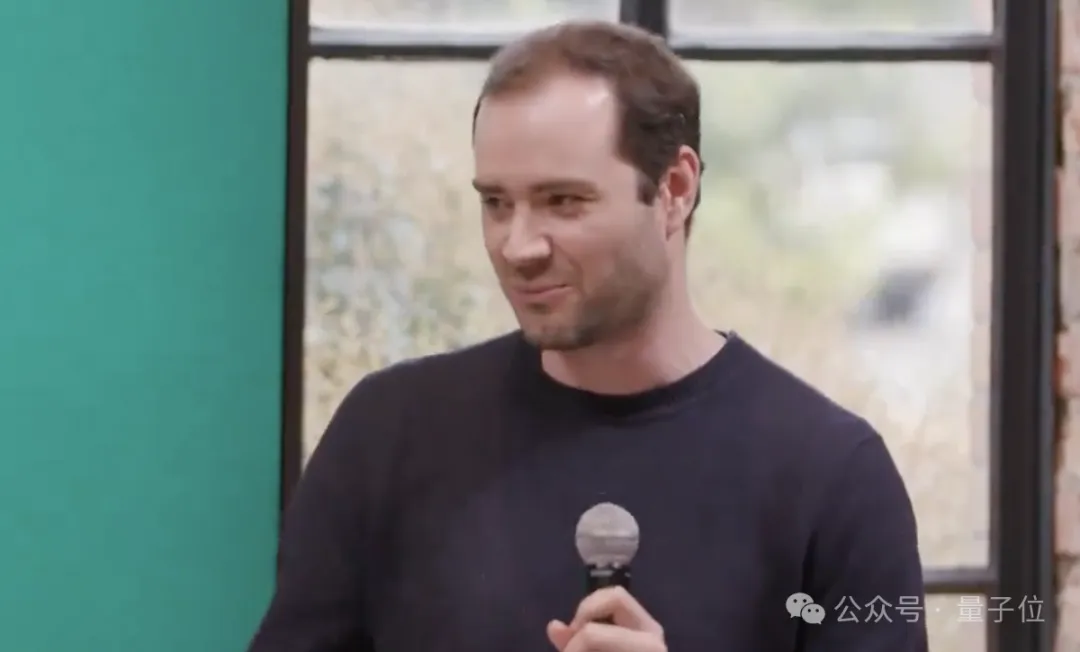
In addition to layoffs, Kapasi also revealed more details about Musk’s management company at the AI Ascent event organized by Sequoia:
Hates meetings, refuses to lie down, prefers to talk about work directly with engineers than with VPs...
In addition, he also talked about many big model topics that everyone cares about, including:
- LLM OS
- Does size matter?
- How can young startups compete with OpenAI?
For more details, the text version is shared below~
(Claude 3 also contributed)
Large language model is new Times CPU
Q: Andre, thank you so much for joining us today. OpenAI's original offices were across the street from our San Francisco offices, and many of you were crowded together.
Besides working upstairs in a chocolate factory and living Willy Wonka’s dream, what are some of your most memorable moments working here?
KAPASI: Yes, OpenAI’s original office was there, if you don’t count Greg’s apartment.
We stayed there for about two years. There was a chocolate factory downstairs and the smell was always delicious. At that time, the team had about 10-20 people.
We had a really fun time there. Lao Huang mentioned at the GTC conference that he sent the first DGX supercomputer to OpenAI, which happened there.
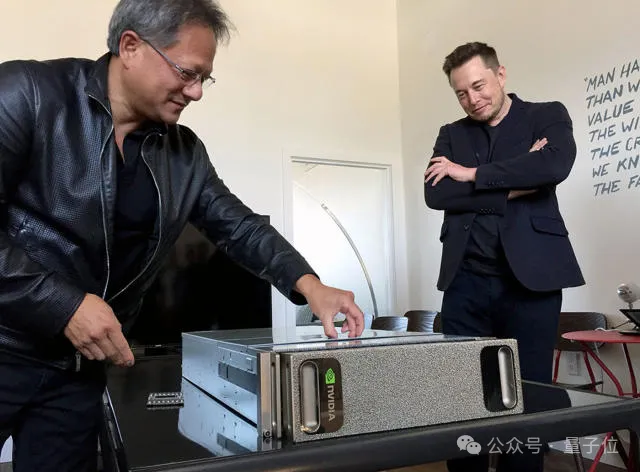
Q: Andre actually needs no introduction, but I still want to mention his background. He studied under Geoffrey Hinton and Li Feifei, and first became famous for his deep learning courses at Stanford University.
In 2015, he co-founded OpenAI. In 2017, he was poached by Musk.
You may not remember the situation at that time: Tesla has experienced 6 Autopilot leaders, each of whom only worked for 6 months. I remember when Andre took over the position, I wished him good luck.
It didn’t take long for him to return to OpenAI. But now he has complete freedom and can do whatever he wants. So we're looking forward to hearing the insights he shares today.
What I admire most about Andre is that he is a fascinating futuristic thinker, a staunch optimist, and at the same time a very pragmatic builder. Today he will share some insights on these aspects with us.
First of all, even 7 years ago, AGI seemed like an almost impossible goal to achieve in our lifetime. And now it seems to be in sight. What do you see in the next 10 years?
Kapasi: You are right. A few years ago, the path of AGI was still very unclear and was still in a very academic discussion stage. But now it's clear, and everyone is working hard to fill the void.
Optimization work is in full swing. Roughly speaking, everyone is trying to build "Large Model Operating System (LLM OS)".
I like to compare it to an operating system. You need to prepare various peripherals and connect them to a new CPU. These peripheral devices include various modalities such as text, images, and audio. The CPU is the language model itself. It also connects to all the Software 1.0 infrastructure we've built.
I think everyone is trying to build something like this and then customize it into a product that works in every sector of the economy.
In general, the development direction is that we can adjust these relatively independent agents, assign them high-level tasks, and let them specialize in various tasks. This will be very interesting and exciting. And there is not just one agent, there will be many agents. Imagine what that would be like?
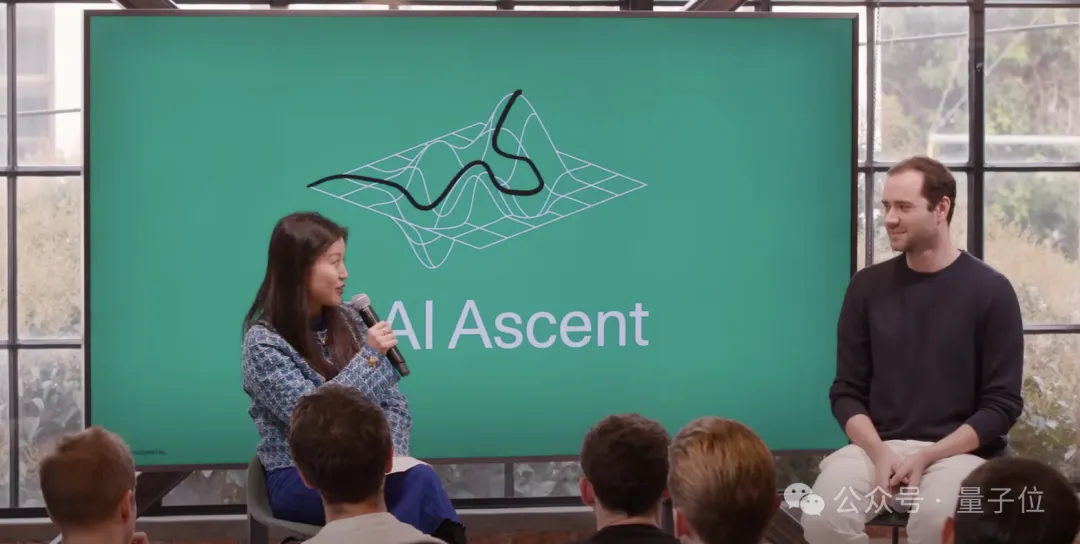
Q: If the future is really what you said, how should we adjust our lifestyle now?
Kapasi: I don’t know. I think we have to work hard to build it, to influence it, to make sure it's positive. In short, try to make the results as good as possible.
Q: Since you are now a free man, I would like to raise an obvious issue, that is, OpenAI is dominating the entire ecosystem.
Most of the people here today are entrepreneurs trying to carve out some niche and praying that OpenAI doesn’t knock them out of business overnight.
Do you think there is still a chance? In what areas will OpenAI continue to dominate?
Kapasi: My overall impression is that OpenAI is working hard to build an LLM operating system. As we heard earlier today, OpenAI is trying to develop a platform. On this basis, you can build different companies in different verticals.
The operating system analogy is actually very interesting, because operating systems like Windows also come with some default applications, such as browsers.
So I think OpenAI or other companies may also launch some default applications, but that doesn’t mean you can’t run different browsers on them, you can run different browsers on top of them agent.
There will be some default apps, but there will also likely be a vibrant ecosystem with a variety of apps fine-tuned for specific scenarios.
I like the analogy of early iPhone apps. These apps all start out as a bit of a joke and take time to develop. I think we're going through the same thing right now. People are trying to figure out what is this thing good at? What are you not good at? How do I use it? How to program? How to debug? How to make it perform actual tasks? What kind of supervision is required? Because it is quite autonomous, but not completely autonomous. So what should supervision look like? What should the assessment look like? There is a lot to think about and understand. I think it will take some time to figure out how to work with this new infrastructure. So I think we'll see that in the next few years.
Q: The competition for large language models is now in full swing, including OpenAI, Anthropic, Mistral, Llama, Gemini, the entire open source model ecosystem, and a large number of small models. How do you foresee the future development of the ecosystem?
KAPASI: Yeah, so again, the operating system analogy is interesting. We have closed source systems such as Windows and macOS, as well as open source Linux. I think the big model might have the same pattern. We must also be careful when calling these models. Many of the models you listed, such as Llama, Mistral, etc., I do not think they are truly open source. It's like throwing out an operating system binary that you can use, but isn't entirely useful. There are indeed some language models that I consider to be completely open source, and they fully release all the infrastructure required to compile the "operating system", from data collection to model training. This is definitely better than just getting the model weights because you can fine-tune the model.
But I think there is a subtle problem, which is that you can't completely fine-tune the model, because the more you fine-tune it, the worse it will perform on every other task.
So if you want to add a certain ability without affecting other abilities, you may actually need to mix the previous data set distribution and the new data set distribution for training. If you are only given model weights, you can't actually do this. You need training loops, you need data sets, etc. So you're really limited in what you can do with these models.
They are certainly helpful, but we may need better terms to describe them. Open weight model, open source model, and proprietary model, the ecosystem may look like this. And it's likely to be very similar to the ecosystem we have today.
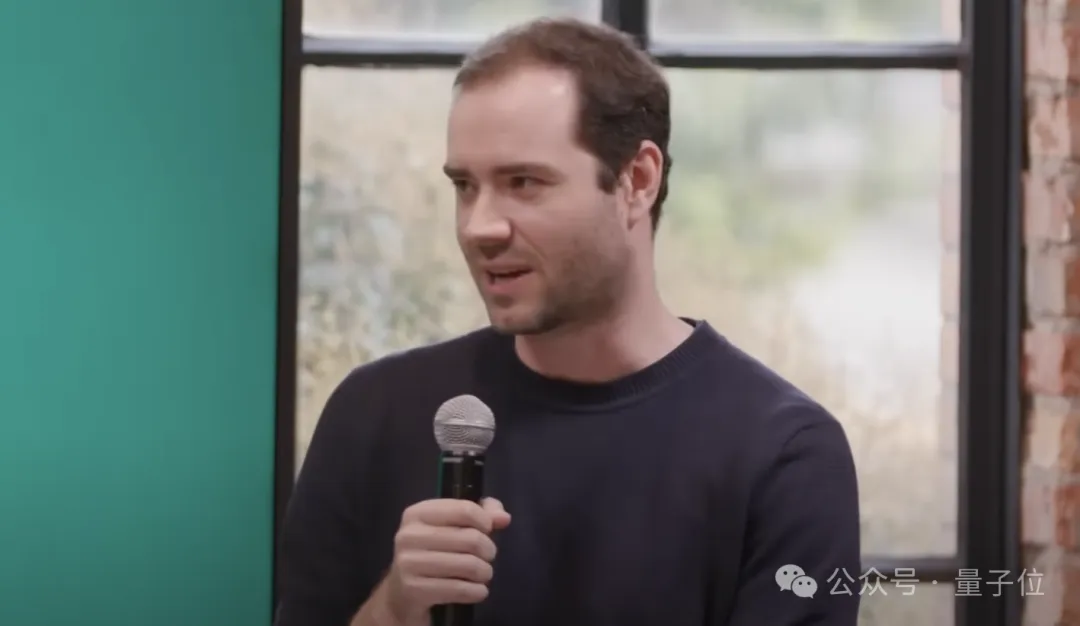 Scale is the main determining factor
Scale is the main determining factor
: Another question I want to ask is scale. Simply put, size seems to be most important. Data scale and computing power scale. So the big research labs, the big tech giants have a huge advantage today. What do you think about this? Is size everything? If not, what else matters?
Kapasi: I think scale is definitely the first. There are some details that really need to be taken care of. I think the preparation of the data set is also very important, making the data very good and very clean, which can make the calculation more efficient.
But I think scale will be the main determining factor, the first principal ingredient, and of course you need to get a lot of other things right.
If you don’t have scale, you fundamentally can’t train these large models. If you're just doing things like fine-tuning, you probably don't need that scale, but we haven't really seen that fully realized yet.
Q: Can you elaborate on what other factors you think are important besides scale, maybe with lower priority?
Kappasi: First of all, you can't just train these models. If you just provide funding and scale, it's still very difficult to actually train these models. Part of the reason is that the infrastructure is too new, still under development, and not yet complete. But training a model at this scale is extremely difficult and is a very complex distributed optimization problem. Talents in this area are currently quite scarce. It's basically a crazy thing where the model is run on thousands of GPUs, failing randomly at different points in time. Monitoring this process and making it work is actually an extremely difficult challenge. Until recently, GPUs were not as capable as expected of handling 10,000 GPU workloads. So I think a lot of infrastructure is creaking under this pressure and we need to address that. Now, if you just gave someone a bunch of money or a bunch of GPUs, I'm not sure they could produce large models directly, which is why it's not just a matter of scale. You actually need a lot of expertise, including infrastructure, algorithms, and data, and you have to be very careful. Q: The ecosystem is growing so fast, and some of the challenges we thought existed a year ago are increasingly being addressed. Illusions, contextual windows, multi-modal capabilities, inference is getting faster and cheaper. What other language model research challenges are keeping you up at night right now? What problems do you think are urgent enough but also solvable? Kapasi: I think in terms of algorithms, one issue that I think about a lot is the clear difference between diffusion models and autoregressive models. They are all ways of representing probability distributions. It turns out that different modalities clearly lend themselves to one or the other. I think there might be some room to unify them, or connect them in some way. Another thing I want to point out is the inherent efficiency of the infrastructure for running large models. My brain consumes about 20 watts. Huang just talked about the large-scale supercomputer they want to build at GTC, and the numbers are all in the megawatt range. So maybe you don't need that much energy to run a brain. I don't know exactly how much it will take, but I think it's safe to say that we can get anywhere from 1,000x to 1,000,000x more efficient in running these models. I think part of the problem is that current computers are simply not suitable for this workload. Nvidia's GPUs are a good step in this direction, because you need extremely high parallelism. We don't really care about sequential computations that rely on the data in some way. We just need to perform the same algorithm on many different array elements. So I think number one is adapting computer architecture to accommodate new data workflows, and number two is pushing some of the things that we're currently seeing improvements to. The first one may be precision. We've seen the accuracy drop from the original 64-bit double to now 4, 5, 6 bits, or even 1.5 to 8 bits depending on which paper you read. So I think accuracy is a big lever in controlling this problem. The second one is of course sparsity. In fact, many parameters in large models are zero, or close to zero. So it would be great if you could exploit this in some way, say by making sparse matrix multiplication more efficient. There is some promising research in this area. Also there are some interesting ideas like singular value decomposition (SVD) to see if you can break it down into smaller matrices and then reassemble it. For example, only forward propagation is calculated without back propagation, and a smaller model is trained to predict the output of a larger model. So I think, fundamentally, there are two problems to solve: One is to build more suitable hardware. Another is to find better algorithms that increase efficiency while maintaining performance. I think there is still a lot of room for exploration in both aspects. From an energy efficiency perspective, if we could close the gap with the brain, that would be a huge improvement. This could mean that each of us can afford a model, or run a model on our devices without needing to be connected to the cloud. Q: Okay, let’s change the topic. You've worked alongside many of the greats of this era, Sam, Greg and other team members at OpenAI, as well as Musk. How many of you here have heard the joke about the U.S. rowing team and the Japanese rowing team? This is an interesting story. Musk has shared this joke, and I think it reflects a lot of his philosophy on building culture and teams. There are two teams in the story, the Japanese team has 4 rowers and 1 coxswain, and the American team has 4 coxswains and 1 coxswain. Can anyone guess what Team USA will do when they lose? Speak up. Exactly, they're going to fire that oarsman. When Musk shared this example, I think he was explaining his views on hiring the right talent and building the right team. What have you learned from working closely with these incredible leaders? KAPASI: I would say that Musk’s way of managing the company is very unique. I feel like people don’t really realize how special it is. Even if you listen to others talk about it, it is difficult for you to fully understand it. I find it difficult to describe in words. I don't even know where to begin. But it’s a really unique and different way to do it. In my words, He is managing the largest startup company in the world. I feel like it’s hard for me to describe it clearly right now, and it may take longer to think and summarize. But first of all, he likes to form a company by a small team with strong strength and high technical content. In other companies, the team size often becomes larger during the development process. Musk, on the other hand, has always been against overexpansion of the team. I had to work hard to recruit employees. I had to beg him to allow me to recruit people. Also, it is often difficult for large companies to get rid of underperforming employees. Musk, on the other hand, is more willing to take the initiative to lay off employees. In fact, I had to fight hard to keep some employees because he always defaulted to laying them off. So the first point is to maintain a small team with strong strength and excellent technology. Absolutely no non-technical middle management. This is the most important point. The second point is how he creates a working atmosphere and the feeling he gives when he walks into the office. He wants the work environment to be vibrant. People move around, think about things, focus on exciting things. They are either writing and drawing on the whiteboard, or typing code in front of the computer. He doesn't like a pool of stagnant water, and he doesn't like the lack of life in the office. He also doesn’t like long meetings and always encourages people to leave decisively when the meeting is pointless. You could really see that if you had nothing to contribute and gain from the meeting, you could just walk out, and he was very supportive of that. I think this is difficult to see in other companies. So I thinkCreating a positive working atmosphere is the second important concept that he instilled. Perhaps this also includes the tendency for companies to over-protect their employees as they get larger. That won't be the case in his company. The company's culture is that you have to show 100% of your professional abilities, and the work pace and intensity are very high. I think the last thing that's probably the most unique, interesting and unusual is that he's so connected to the team. Usually the CEO of a company is an unreachable person who manages five levels of subordinates and only communicates with the vice president. The vice president communicates with their subordinate supervisors, and the supervisor communicates with the managers. You only Able to speak with immediate supervisor. But Musk runs the company entirely differently. He would come to the office and talk directly to the engineers. When we have meetings, there are often 50 people in the conference room face to face with Musk, and he talks directly to the engineers. He didn't want to just talk to VPs and executives. Usually a CEO will spend 99% of his time communicating with the vice president, and he may spend 50% of his time communicating with engineers. So if the team is small and efficient, engineers and code are the most trusted sources of information. They have firsthand knowledge of the truth. Musk wants to communicate directly with engineers to understand the actual situation and discuss how to improve it. So I would say the fact that he's connected to the team and not distant is very unique. Also, the way he wields power within the company is unusual. For example, if he talks to engineers and learns about some problems that are hindering the progress of the project. For example, if an engineer says, "I don't have enough GPUs to run the program," he will take it to heart. If he hears a similar complaint twice, he'll say, "Okay, here's a problem. So what's the timetable now? When will it be resolved?" If he doesn't get a satisfactory answer, He'll say, "I'm going to talk to the person in charge of the GPU cluster," and someone will call that person and he'll literally say, "Double the cluster capacity now. Talk to me every day starting tomorrow. Report the progress until the cluster size doubles." The other party may shirk it by saying that it still needs to go through the procurement process, which will take 6 months. At this time Musk will frown and say: "Okay, I want to talk to Huang Renxun." Then he will directly remove the project obstacles. So I think people don't really realize how deeply involved he is in various tasks, clearing obstacles and exerting influence. Honestly, if you leave such an environment and go to an ordinary company, you will really miss these unique places. Musk “is running the world’s largest startup”
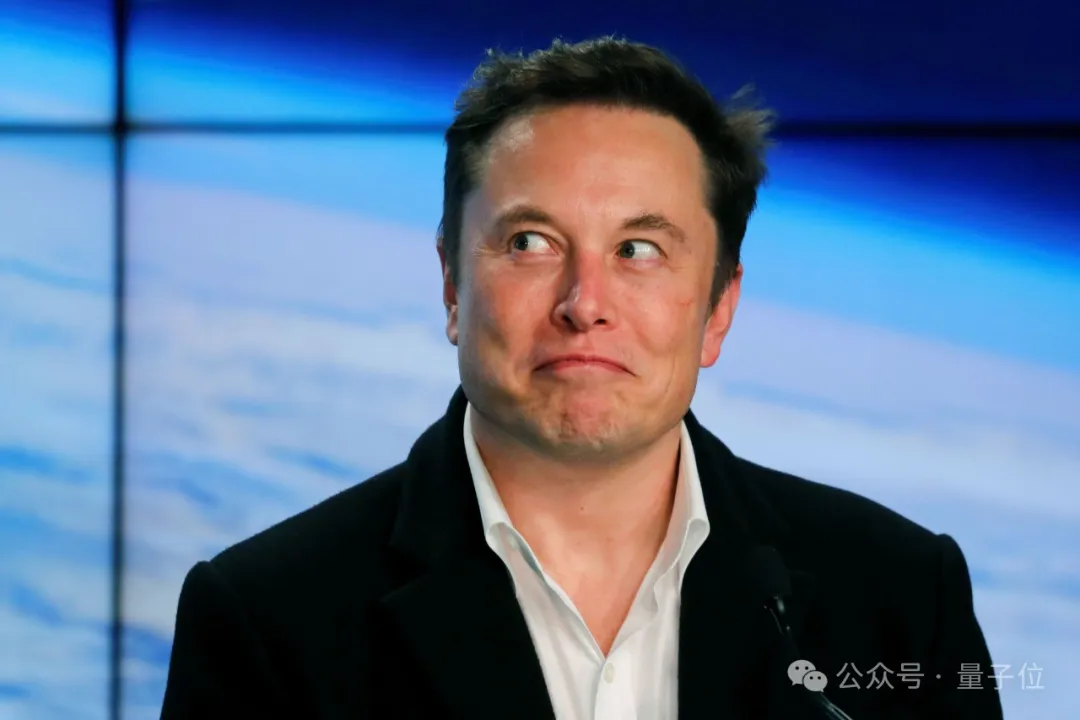
The above is the detailed content of My leader Musk: Hates meetings, doesn't want non-technical middle managers, and advocates layoffs. For more information, please follow other related articles on the PHP Chinese website!

Hot AI Tools

Undresser.AI Undress
AI-powered app for creating realistic nude photos

AI Clothes Remover
Online AI tool for removing clothes from photos.

Undress AI Tool
Undress images for free

Clothoff.io
AI clothes remover

Video Face Swap
Swap faces in any video effortlessly with our completely free AI face swap tool!

Hot Article

Hot Tools

Notepad++7.3.1
Easy-to-use and free code editor

SublimeText3 Chinese version
Chinese version, very easy to use

Zend Studio 13.0.1
Powerful PHP integrated development environment

Dreamweaver CS6
Visual web development tools

SublimeText3 Mac version
God-level code editing software (SublimeText3)

Hot Topics
 1387
1387
 52
52
 iPhone 16 Pro and iPhone 16 Pro Max official with new cameras, A18 Pro SoC and larger screens
Sep 10, 2024 am 06:50 AM
iPhone 16 Pro and iPhone 16 Pro Max official with new cameras, A18 Pro SoC and larger screens
Sep 10, 2024 am 06:50 AM
Apple has finally lifted the covers off its new high-end iPhone models. The iPhone 16 Pro and iPhone 16 Pro Max now come with larger screens compared to their last-gen counterparts (6.3-in on the Pro, 6.9-in on Pro Max). They get an enhanced Apple A1
 iPhone parts Activation Lock spotted in iOS 18 RC — may be Apple\'s latest blow to right to repair sold under the guise of user protection
Sep 14, 2024 am 06:29 AM
iPhone parts Activation Lock spotted in iOS 18 RC — may be Apple\'s latest blow to right to repair sold under the guise of user protection
Sep 14, 2024 am 06:29 AM
Earlier this year, Apple announced that it would be expanding its Activation Lock feature to iPhone components. This effectively links individual iPhone components, like the battery, display, FaceID assembly, and camera hardware to an iCloud account,
 iPhone parts Activation Lock may be Apple\'s latest blow to right to repair sold under the guise of user protection
Sep 13, 2024 pm 06:17 PM
iPhone parts Activation Lock may be Apple\'s latest blow to right to repair sold under the guise of user protection
Sep 13, 2024 pm 06:17 PM
Earlier this year, Apple announced that it would be expanding its Activation Lock feature to iPhone components. This effectively links individual iPhone components, like the battery, display, FaceID assembly, and camera hardware to an iCloud account,
 Gate.io trading platform official app download and installation address
Feb 13, 2025 pm 07:33 PM
Gate.io trading platform official app download and installation address
Feb 13, 2025 pm 07:33 PM
This article details the steps to register and download the latest app on the official website of Gate.io. First, the registration process is introduced, including filling in the registration information, verifying the email/mobile phone number, and completing the registration. Secondly, it explains how to download the Gate.io App on iOS devices and Android devices. Finally, security tips are emphasized, such as verifying the authenticity of the official website, enabling two-step verification, and being alert to phishing risks to ensure the safety of user accounts and assets.
 Multiple iPhone 16 Pro users report touchscreen freezing issues, possibly linked to palm rejection sensitivity
Sep 23, 2024 pm 06:18 PM
Multiple iPhone 16 Pro users report touchscreen freezing issues, possibly linked to palm rejection sensitivity
Sep 23, 2024 pm 06:18 PM
If you've already gotten your hands on a device from the Apple's iPhone 16 lineup — more specifically, the 16 Pro/Pro Max — chances are you've recently faced some kind of issue with the touchscreen. The silver lining is that you're not alone—reports
 Anbi app official download v2.96.2 latest version installation Anbi official Android version
Mar 04, 2025 pm 01:06 PM
Anbi app official download v2.96.2 latest version installation Anbi official Android version
Mar 04, 2025 pm 01:06 PM
Binance App official installation steps: Android needs to visit the official website to find the download link, choose the Android version to download and install; iOS search for "Binance" on the App Store. All should pay attention to the agreement through official channels.
 Beats adds phone cases to its lineup: unveils a MagSafe case for the iPhone 16 series
Sep 11, 2024 pm 03:33 PM
Beats adds phone cases to its lineup: unveils a MagSafe case for the iPhone 16 series
Sep 11, 2024 pm 03:33 PM
Beats is known for launching audio products such as Bluetooth speakers and headphones, but in what can best be described as a surprise, the Apple-owned company has branched into making phone cases, starting with the iPhone 16 series. The Beats iPhone
 How to solve the problem of 'Undefined array key 'sign'' error when calling Alipay EasySDK using PHP?
Mar 31, 2025 pm 11:51 PM
How to solve the problem of 'Undefined array key 'sign'' error when calling Alipay EasySDK using PHP?
Mar 31, 2025 pm 11:51 PM
Problem Description When calling Alipay EasySDK using PHP, after filling in the parameters according to the official code, an error message was reported during operation: "Undefined...



